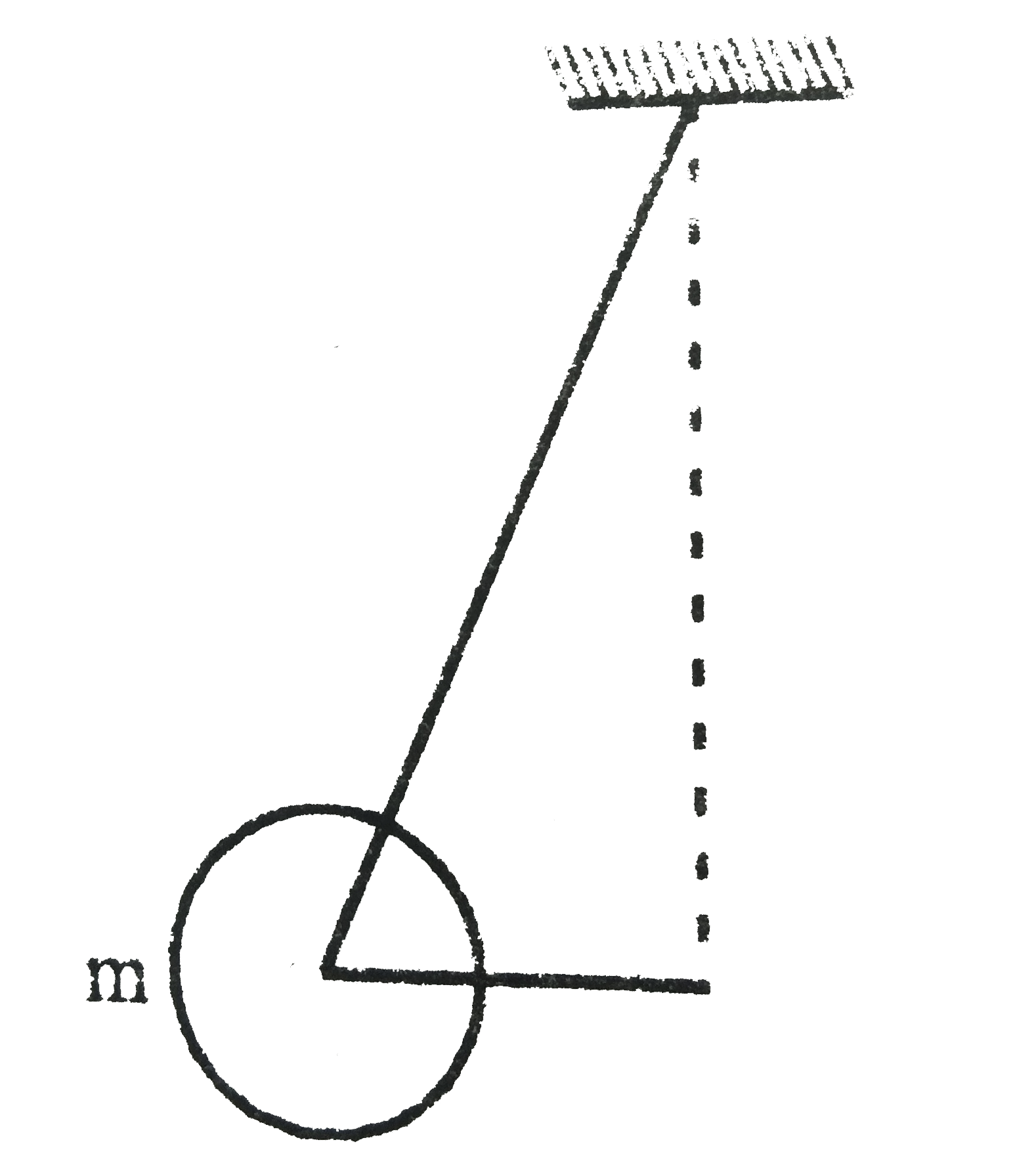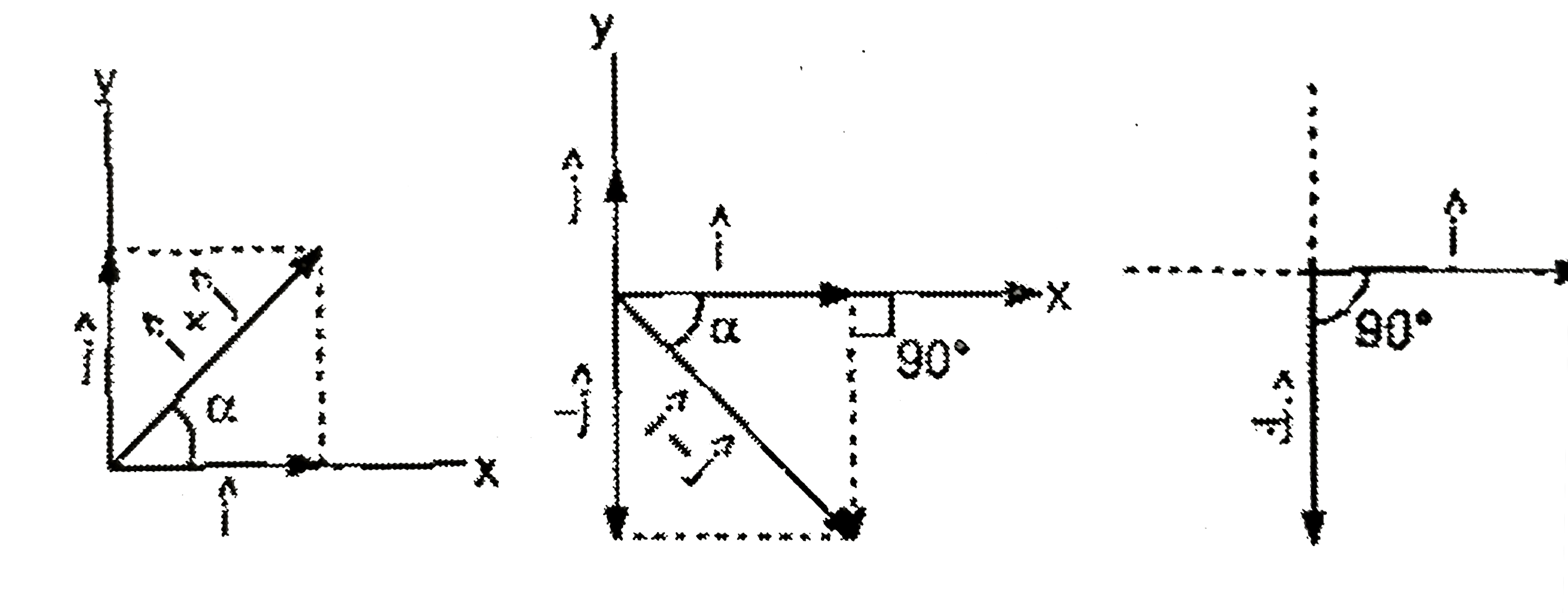If ˆi,ˆj and ˆk are unit vectors along X,Y & Z axis respectively, then tick the wrong statement: Solution in Gujrati
The correct Answer is:327.9 N
Resultant force in vertical direction

=50√3cos30∘+100+100√3cos30∘
=50×32+100+100×32=325N
Resultant force in horizontal direction
=100√3sin30∘−50√3sin30∘
100√32−50√32=25√3N
so resultant pull=√(325)2+(25√3)2=327.9N
Topper's Solved these Questions
- BOOK - ALLEN CHAPTER - BASIC MATHSEXERCISE - Exersice-4[B]14videos
BASIC MATHS
- BOOK - ALLEN CHAPTER - BASIC MATHSEXERCISE - EXERCISE-5(A)15videos
BASIC MATHS
- BOOK - ALLEN CHAPTER - BASIC MATHSEXERCISE - DATA SUFFICIENCY QUESTIONS3videos
BASIC MATHS
- BOOK - ALLEN CHAPTER - AIIMS 2019EXERCISE - PHYSICS39videos
AIIMS 2019
- BOOK - ALLEN CHAPTER - CIRCULAR MOTIONEXERCISE - EXERCISE (J-A)6videos
CIRCULAR MOTION
Similar Questions
Which of the following vector identies is false ?
06:50View SolutionThe forces, which meet at one point but their line of action do not lie in one plane,are called
01:29View SolutionTwo vectors →A and →B lie in a plane, another vector →C lies outside this plane, then the resultant of these three vectors i.e. →A+→B+→C
02:21View SolutionA simple pendulum executing SHM in a straight line has zero velocity at 'A' and 'B' whose distances form 'O' in the same line OAB are 'a' and 'b'. If the velocity half wat between them is 'v' then its time period is
02:03View SolutionA ball of mass (m)0.5kg is attached to the end of a string having length (L)0.5m. The ball is rotated on a horizontal circular path about vertical axis. The maximum tension that the string can bear is 324N. The maximum possible value of angular velocity of ball (radian/s) is -
 .03:25View Solution
.03:25View SolutionTwo unit vectors ˆi and ˆj are directed along x-axis and y-axis respectively. What is the magnitude and direction of the vectors ˆi+ˆjandˆi−ˆj?
 03:01View Solution
03:01View SolutionIf hati and hatj are unit vectors along X-and Y-axis respective, then what is the magnitude and direction of hati +hatj and hati - hatj ?
02:12View SolutionIf ˆi,ˆj and ˆk represent unit vectors along the x,y and z-axes respectively, then the angle θ between the vectors (ˆi+ˆj+ˆk) and (ˆi+ˆj) is equal to :
03:31View SolutionIf ˆi,ˆjandˆk represent unit vectors along the x, y and z-axes respectively, then the angle θ between the vectors (ˆi+ˆj+ˆk)and(ˆi+ˆj) is equal to :
01:53View Solutionसदिश ˆi+ˆj+ˆk की दिशा में इकाई सदिश ज्ञात कीजिए। इस सदिश का x अक्ष के साथ बनने वाला कोण भी ज्ञात कीजिए।
02:25View Solutionˆi,ˆj तथा ˆk क्रमशः X−,Y−तथा Z-अक्षों के अनुदिश एकांक सदिश है | निम्नलिखित में कौन-सा कथन सही नहीं है ?
05:05View Solutionˆiandˆj are unit vectors along x and y axis. What is the magnitude and direction of the vector ˆi+ˆj ?
01:24View SolutionIf ˆi,ˆj,ˆk represent unit vectors along the X,Y, Z axes respectively, then the angle between the vectors ˆi+ˆj+ˆkandˆi+ˆj is equal to
View SolutionThe unit vector along vector hati + hatj + hatk is ………..
04:20View SolutionIf hati and hatj are unit vectors along x and y axes respectively then the angle made by ( hati+hatj) vector with the x-axis is …….. [Fill in the blanks]
01:07View SolutionThree vectors →A=aˆi+ˆj+ˆk,→B=ˆi+bˆj+ˆkand→C=ˆi+ˆj+cˆk are mutually perpendicular (ˆi,ˆjandˆk are unit vectors along X, Y, and Z axis respectively).
The respective values of a,b and c are04:29View Solution

